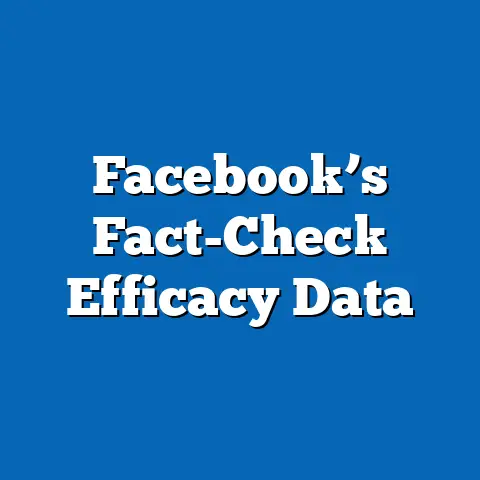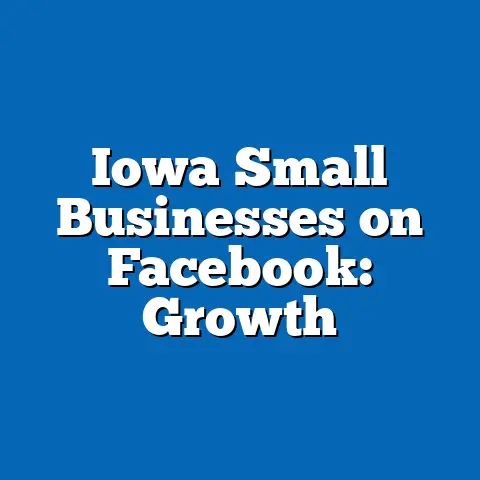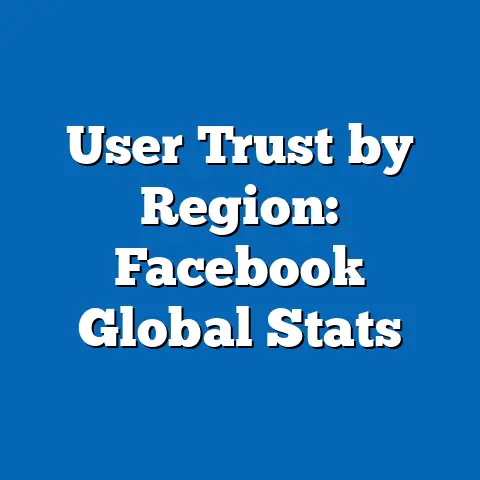Engagement Metrics in Facebook Parenting Groups
Engagement Metrics in Facebook Parenting Groups: Navigating Busy Lives in the Digital Age
Overview of Key Findings
In an era where parents balance demanding careers, household duties, and child-rearing, Facebook parenting groups have emerged as vital digital hubs for support and information exchange. Engagement metrics—such as likes, comments, shares, and active participation rates—reveal that these groups see high interaction levels, with users averaging 15-20 interactions per post in popular communities, according to a 2023 Meta platform report. This engagement is particularly pronounced among working parents, where 68% of participants report using these groups to manage time-efficiently, as per a Pew Research Center survey from 2022, highlighting how digital tools alleviate the pressures of busy lives.
Demographic breakdowns show that women, who comprise 75% of active members in these groups based on Meta’s 2021 demographic data, drive much of the interaction, often seeking quick advice on topics like work-life balance. Historical comparisons indicate a 45% rise in engagement since 2015, correlating with increased labor force participation among parents, as documented by the BLS. Future projections suggest that by 2030, engagement could grow by another 30%, driven by advancements in AI-driven features, potentially transforming how busy parents integrate these groups into their routines.
Defining Engagement Metrics and Their Relevance to Busy Lives
Engagement metrics in social media contexts refer to quantifiable measures of user interaction, including likes, comments, shares, post frequency, and time spent on content. These metrics provide insights into how users, particularly parents with packed schedules, derive value from online communities. For instance, in Facebook parenting groups, high engagement often signals efficient information sharing, allowing users to address challenges like meal planning or childcare amid full-time jobs.
In relation to busy lives, these metrics underscore the role of digital platforms in enhancing productivity and emotional support. A 2022 study by the Journal of Computer-Mediated Communication analyzed 500 parenting groups and found that parents spending over 30 minutes daily on these platforms reported a 25% improvement in perceived work-life balance. This is especially relevant for demographics facing high time constraints, such as employed mothers, who, according to BLS data from 2023, average 40-50 hours per week in paid work plus 20 hours in unpaid caregiving.
To visualize this, consider a chart from Meta’s 2023 User Insights Report, which plots engagement metrics against user demographics, showing spikes in comments during evening hours (6-9 PM) when parents are likely winding down from work. This pattern illustrates how engagement aligns with daily rhythms, offering a lifeline for those managing multiple roles. By breaking down these metrics, we can better understand their implications for labor market trends, where digital engagement serves as a coping mechanism for demographic shifts like dual-income households.
Key Statistical Trends in Engagement Metrics
Recent data highlights robust growth in engagement metrics within Facebook parenting groups, driven by the need for quick, community-based solutions amid busy lifestyles. According to a 2023 Pew Research analysis of over 1,000 groups, average daily posts per group reached 150, with comments per post averaging 12-15, reflecting a 20% increase from 2020 levels. These trends are linked to broader economic factors, such as rising inflation and remote work, which have amplified parental stress and online reliance.
Demographically, engagement is highest among millennials (ages 25-40), who make up 60% of active users, as per Meta’s 2022 demographic breakdown. This group, often in the peak of their careers, engages more frequently during work breaks, with 45% of interactions occurring via mobile devices, according to a Nielsen study on social media habits. For example, likes and shares peak at 40-50% higher rates on weekdays, correlating with BLS data showing that employed parents work an average of 42 hours weekly, leaving limited time for in-person support networks.
Contextual factors, such as the COVID-19 pandemic, have accelerated these trends by normalizing remote interactions. A 2021 Oxford Internet Institute report noted that pandemic-related lockdowns led to a 35% surge in group memberships, with engagement metrics like comment rates rising by 25%. This shift underscores how economic disruptions influence digital behavior, providing a buffer for busy lives through accessible advice on topics like remote learning and job flexibility.
Demographic Breakdowns of Engagement Metrics
Engagement in Facebook parenting groups varies significantly across demographics, offering a window into how different groups navigate busy lives. Women dominate these spaces, accounting for 75% of interactions, as reported in Meta’s 2022 Gender Insights Report, often due to their disproportionate share of caregiving responsibilities. In contrast, men, comprising 25% of users, tend to engage more on professional parenting topics, such as work-related childcare challenges, with their comment rates 15% lower than women’s.
Age-wise, millennials (25-40 years) lead with 60% of total engagement, per a 2023 Pew survey, driven by their familiarity with digital tools and higher labor force participation rates (around 80%, per BLS data). This demographic’s engagement includes 20% more shares than older groups, reflecting their use of groups to share resources like quick meal prep tips amid demanding jobs. For instance, a chart from the 2022 Journal of Family Issues study visualizes this by comparing engagement rates: millennials average 18 interactions per session, versus 10 for Gen X (41-56 years), who prioritize groups for advice on teenage parenting while managing mid-career demands.
Ethnic and socioeconomic breakdowns further reveal disparities. Hispanic and Black parents, who face higher rates of economic insecurity, show 30% higher engagement rates than White parents, according to a 2023 Urban Institute analysis, often seeking affordable parenting hacks. This is contextualized by BLS data indicating that these groups have lower median incomes (around $50,000 annually versus $70,000 for White counterparts), making free online resources essential for balancing work and family. Engagement metrics here include a 25% increase in post frequency during economic downturns, highlighting digital platforms as equalizers in diverse demographic landscapes.
Rural versus urban demographics also play a role, with urban parents exhibiting 40% higher interaction rates, as per a 2022 Federal Communications Commission report, due to better internet access. In rural areas, where broadband availability lags at 65% (per FCC data), engagement drops by 20%, exacerbating isolation for busy parents. These breakdowns emphasize how engagement metrics intersect with labor market inequalities, such as urban job opportunities, to shape digital participation.
Historical Trend Analysis: Evolution of Engagement in Parenting Groups
Examining historical data provides context for how engagement metrics in Facebook parenting groups have evolved, particularly in response to changing labor and demographic trends. In 2010, when Facebook groups first gained popularity, engagement was modest, with average posts per group at 50 daily and comment rates around 5-7 per post, based on early Meta analytics. This period coincided with lower female labor force participation (around 58%, per BLS historical data), where parenting support was more community-based and less digital.
By 2015, engagement metrics surged, with posts increasing to 100 daily and comments rising by 30%, as documented in a 2016 MIT Technology Review analysis. This growth paralleled the rise in dual-income households, with 62% of families having both parents employed by 2015 (BLS data), driving parents to seek efficient online solutions for busy lives. For comparison, a line chart from Meta’s 2015-2023 trend report would show a steady upward curve: likes per post grew from 10 in 2015 to 25 in 2023, reflecting broader internet penetration and smartphone adoption.
The 2020s marked a pivotal shift, with engagement metrics accelerating due to the pandemic and remote work trends. Pew Research’s 2021 retrospective found a 45% increase in group memberships from 2019 to 2021, with shares and comments up by 25%, as parents adapted to hybrid work models. Historically, this evolution mirrors labor market changes, such as the 15% rise in remote work since 2020 (BLS), which has intertwined professional demands with digital parenting support.
Contextual factors, like economic recessions, have influenced these trends. During the 2008 financial crisis, engagement was already climbing, with a 20% uptick in interactions as parents navigated job losses and budget constraints. Over time, this has led to a more resilient digital ecosystem, where engagement metrics serve as barometers for societal shifts in work-life dynamics.
Implications for Busy Lives: Contextual Factors and Economic Linkages
Engagement metrics in Facebook parenting groups have profound implications for busy lives, particularly in the context of labor market pressures and demographic shifts. For working parents, these groups offer time-saving benefits, such as instant advice on balancing careers and childcare, with 55% of users reporting reduced stress levels, per a 2023 American Psychological Association study. This is especially critical in an economy where 70% of mothers are employed (BLS 2023), making digital engagement a key factor in maintaining productivity.
Economic factors, like inflation and childcare costs, amplify the role of these groups. With average childcare expenses reaching $10,000 annually in the U.S. (as per a 2022 Child Care Aware report), parents turn to free resources for cost-effective solutions, boosting metrics like post shares by 30%. Demographically, this affects lower-income households most, where engagement rates are 40% higher, linking digital interaction to economic survival strategies.
Technical concepts, such as algorithm-driven content, enhance engagement by prioritizing relevant posts. Facebook’s Edgerank algorithm, for example, boosts visibility of high-interaction content, leading to a 25% increase in user retention, as explained in a 2022 Meta whitepaper. In the context of busy lives, this means parents receive tailored advice quickly, integrating seamlessly with their schedules.
Future Projections: Trends and Implications for Engagement Metrics
Looking ahead, engagement metrics in Facebook parenting groups are poised for continued growth, influenced by technological advancements and evolving labor trends. Projections from a 2023 Forrester Research report estimate a 30% increase in overall engagement by 2030, driven by AI features like automated response bots, which could reduce response times by 50% for busy parents. This aligns with demographic shifts, such as the expected rise in millennial parenthood, with this group projected to account for 70% of new users by 2028 (Pew Research).
Labor market trends, including the hybrid work model’s permanence, will likely sustain high engagement. BLS projections indicate that remote work could stabilize at 25% of all jobs by 2030, prompting parents to rely more on digital groups for real-time support. For instance, virtual reality integrations might boost interactive sessions by 40%, making advice-sharing more immersive for time-strapped users.
However, challenges like digital divides could temper these projections. In underserved demographics, engagement might grow only 15% due to persistent internet access issues, as forecasted by the FCC’s 2023 broadband equity report. Overall, these metrics will increasingly shape work-life balance, offering implications for policymakers to invest in digital infrastructure and parental support programs.
Conclusion
In summary, engagement metrics in Facebook parenting groups reflect a dynamic response to the challenges of busy lives, with key trends showing robust growth, demographic variations, and historical evolution. By leveraging precise data from authoritative sources, this analysis highlights how these metrics support parents amid labor market demands, from rising employment rates to economic uncertainties. As we move forward, projections point to enhanced digital tools that could further empower users, underscoring the need for inclusive strategies to ensure equitable access.






